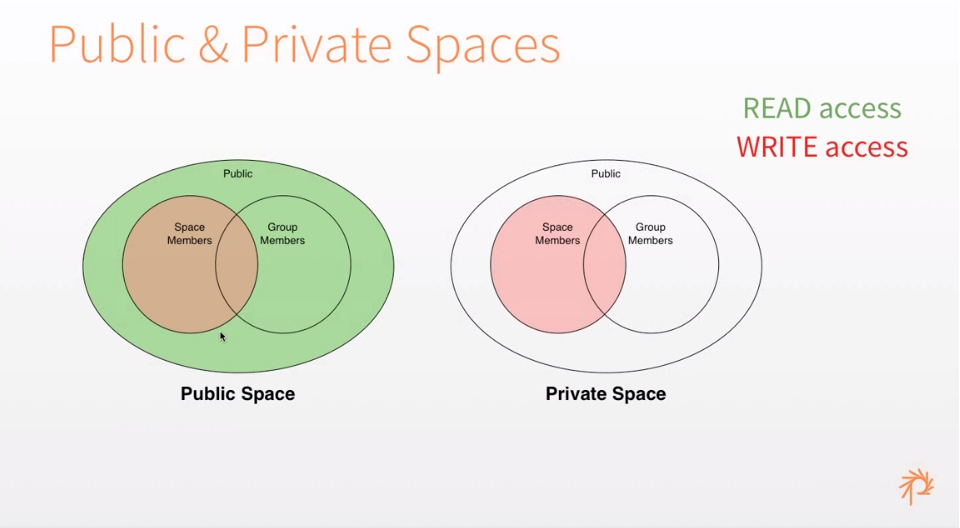What Is The Relationship Between Architecture And Public Spaces?

When it comes to designing and constructing buildings, the primary focus is often on creating functional and aesthetically pleasing structures. However, architecture plays a much larger role in society than just the buildings themselves. In fact, architecture can have a significant impact on public spaces and the communities they serve.
In recent years, there has been a renewed interest in designing and revitalizing public spaces as a way to foster community engagement and improve quality of life. This is especially important as more and more people are living in urban areas, where access to green spaces and community gathering areas can be limited.
Here are some key points regarding architecture renewal in relationship to public space as a catalyst for community engagement:
The Importance of Public Spaces
Public spaces are an essential component of any community. They serve as gathering places for friends and families, as well as hubs for cultural activities and events. Public spaces are also crucial for promoting physical activity and exercise, which is critical for overall health and well-being.
However, not all public spaces are created equal. Many are outdated and lack the amenities and features that people need to feel comfortable and engaged. This is where architecture can play a key role in revitalizing public spaces.
Revitalizing Public Spaces
Revitalizing public spaces involves more than just adding a few benches and planters. It requires a thoughtful and comprehensive approach that takes into account the needs and desires of the community. Some ways that architecture can help revitalize public spaces include:
Designing for Accessibility
It is essential to design public spaces that are accessible to everyone, regardless of their physical ability. This means including features like ramps, wider sidewalks, and accessible seating areas.
Creating Gathering Spaces
Public spaces should be designed with gathering in mind. This means creating areas for people to sit, relax, and socialize. It can also mean creating spaces for cultural events and activities, like concerts, art shows, and festivals.
Incorporating Nature
Public spaces can also benefit from incorporating nature into their designs. This can include creating green spaces, planting trees, and incorporating natural elements like water features.
The Benefits of Architectural Renewal
Renewing public spaces through architecture has numerous benefits for both individuals and the community as a whole. Some of the primary benefits include:
Improved Health and Well-Being
Public spaces that are safe, accessible, and designed with health in mind can have a positive impact on physical and mental well-being. People are more likely to get outside and engage in physical activity when there are inviting public spaces available.
Community Engagement
Revitalized public spaces also help foster community engagement. When people have access to well-designed public spaces, they are more likely to interact with their neighbors and participate in community events and activities. This, in turn, can lead to a stronger sense of community and a more vibrant neighborhood.
Economic Benefits
Investing in public spaces can also have economic benefits for the community. Revitalized public spaces can attract new businesses and tourism, which can have a positive impact on the local economy.
Environmental Benefits
Lastly, renewing public spaces through architecture can have environmental benefits. By incorporating green spaces and natural features, public spaces can help mitigate the urban heat island effect and contribute to cleaner air and water.
FAQ
What is architectural renewal?
Architectural renewal is the process of revitalizing existing buildings and public spaces through thoughtful design and renovation. This can involve updating outdated features, retrofitting buildings for greener energy usage, and adding new amenities to existing public spaces. The goal is to improve the functionality and accessibility of these spaces while also creating a more aesthetically pleasing environment for the community.
Why is it important to renew public spaces?
Renewing public spaces is important for a variety of reasons. For one, public spaces are critical for promoting physical activity and exercise, which is essential for overall health and well-being. Additionally, public spaces are essential for bringing communities together and promoting social engagement and cultural activities. Renewing these spaces can help create a more cohesive, engaged, and vibrant community overall.
How does architecture play a role in public space renewal?
Architecture plays a crucial role in public space renewal by providing the designs and plans necessary to bring these spaces to life. Architects take into account the unique needs and desires of the community and work to create spaces that are welcoming, safe, and accessible for all. Architecture also plays a significant role in incorporating sustainable design concepts into public spaces, such as green roofs, solar panels, and rainwater harvesting systems.
What are some examples of successful public space renewal projects?
There are many examples of successful public space renewal projects around the world. One example is the High Line in New York City, which transformed an elevated rail line into a unique and inviting public park. Another example is the Cheonggyecheon Stream Restoration Project in Seoul, South Korea, which transformed a neglected highway into a vibrant, green public space. These projects demonstrate the power of thoughtful design and architecture to revitalize public spaces and improve quality of life for the community.
In conclusion, architecture has the potential to be a powerful force for change in society. By focusing on the relationship between public spaces and community engagement, we can create a more equitable and vibrant world for everyone.



Post a Comment for "What Is The Relationship Between Architecture And Public Spaces?"